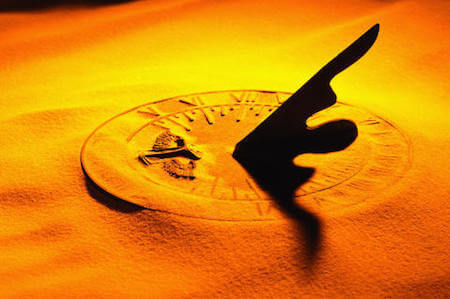How can it already be tomorrow in Australia? We measure time around the world using time zones, but it can be confusing to figure out how the time zones vary within your own country, let alone around the world! Maybe Kidzworld can help!
 New York, London and Tokyo world clocks
New York, London and Tokyo world clocks
Time Zone History
- Even though times have always varied around the world, time zones haven't always existed.
- A substantial difference in geographical location always means a corresponding difference in the sun's apparent position in the sky, but until the last 200 years or so travel was so slow that the difference wasn't really discernible to those crossing long distances.
- Local time was always in place, which meant that people looked up at the sun or used technology like sundials to judge the time.
- This became problematic once high speed transportation, in particular the railroad, came along.
- It was incredibly confusing to judge when a train may come, because local times varied so widely. Thus, the demand for a standardized system of time grew.
 The sundial was an ancient way of telling timeCourtesy of greenwichmeantime.com
The sundial was an ancient way of telling timeCourtesy of greenwichmeantime.com
Standardizing Time Zones
- Some countries, such as the United States of America and the United Kingdom, set up standard time zones within their own borders, but it wasn't until 1884 that the International Meridian Conference was held in Washington, DC.
- The conference established that the prime meridian (the base of all time zones) would be at the Greenwich Observatory in London, United Kingdom.
- This base time zone would be called Greenwich Mean Time (now called Coordinated Universal Time).
- It took some time for standardized time zones to be adopted around the world, but by the 1920s most countries had modified their systems accordingly.
 Check out the prime meridian at night!Courtesy of the National Maritime Museum
Check out the prime meridian at night!Courtesy of the National Maritime Museum
Time Zone Facts
- On average, time zones are a longitude of 15 degrees wide, because there are 24 hours in a day and 360 degrees of longitude around the Earth.
- Not all countries follow these parameters, though - for example, despite India's size, the country has only one time zone!
- And India isn't the only one; China, a country almost as big as the United Sates, also observes only one time zone.
 India only uses one time zone!Courtesy of techicy.com
India only uses one time zone!Courtesy of techicy.com
For Example...
- Just so you can get an idea of the differences in time between countries, here are some examples!
- Vancouver, Canada and Melbourne, Australia are 17 hours apart. That means if it's 3:00pm on August 25th in Vancouver, it's 8:00am on August 26th in Melbourne! If you live in Toronto, Canada, and it's 1:30pm, in Amsterdam, the Netherlands, it's 7:30pm.
- One more: if you live in London, United Kingdom, and are planning to call Shanghai, China better make sure to call early in the day because Shanghai is 7 hours ahead of London.
 Check out the amazing Shanghai skyline!Courtesy of touristboard.com
Check out the amazing Shanghai skyline!Courtesy of touristboard.com
Because we can now travel very quickly by plane, time zones really help us keep on track and on schedule. Just make sure to check the local time if you're traveling and set your watch accordingly!
Have Your Say!
What time zone do you live in? Compare with your friends at Kidzworld!

































